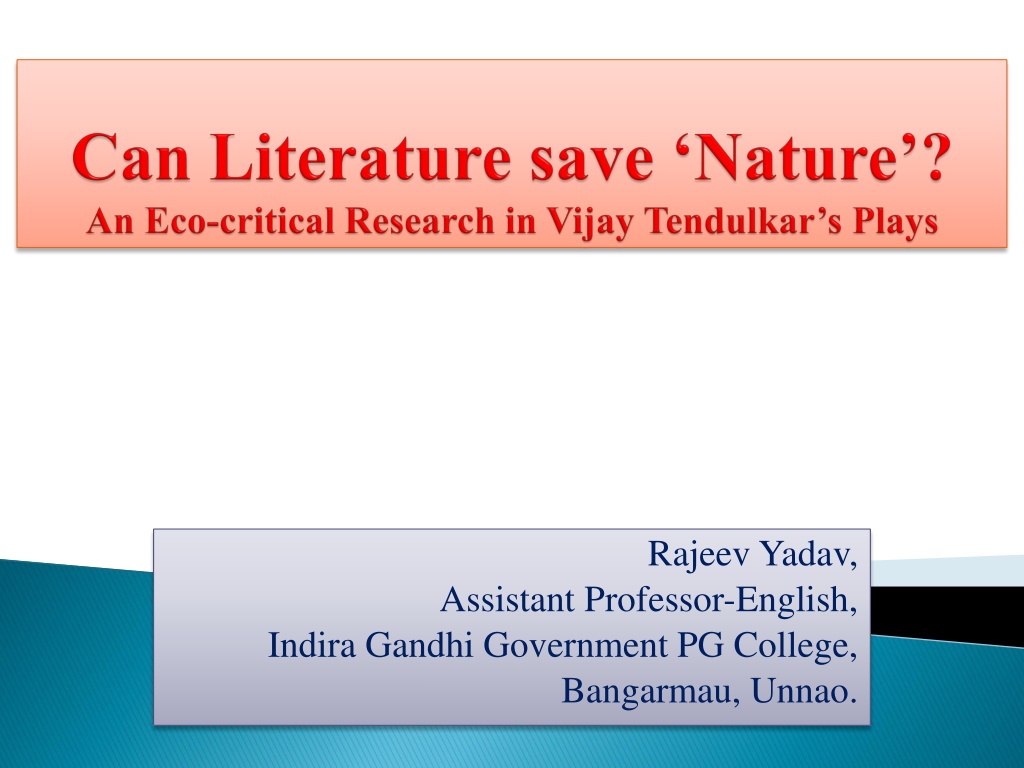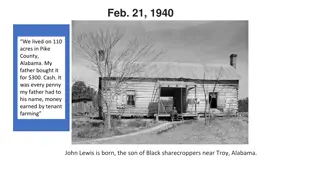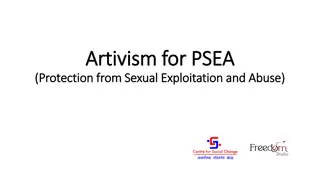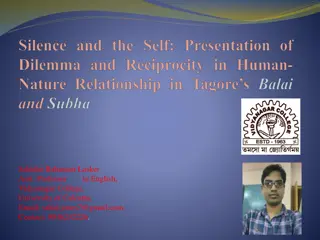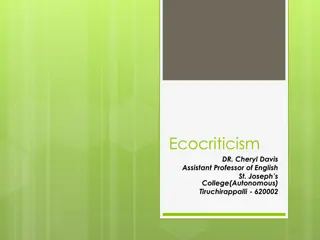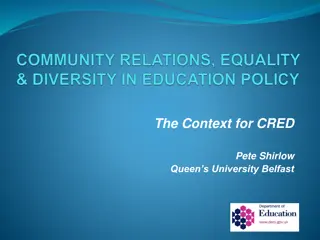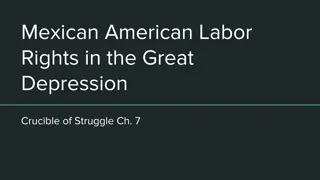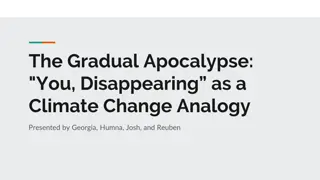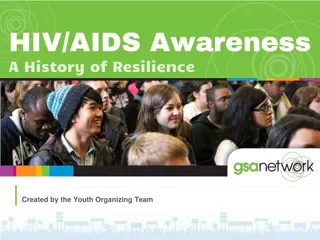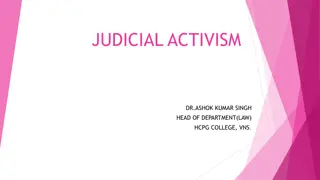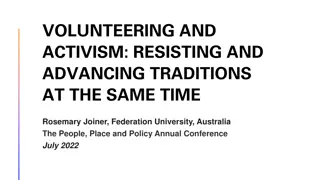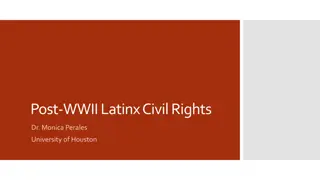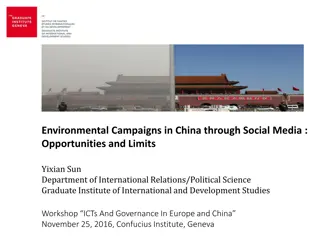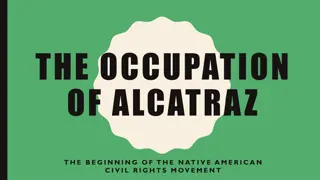Exploring Ecocriticism: Literature, Environment, and Activism
Investigate the intertwined relationship between literature, environment, and activism through ecocriticism. Analyze cultural texts, societal constructions of nature, and the call for interdisciplinary approaches to address ecological concerns. Ecocriticism delves into representation of nature in texts, aligns with ecological activism, and highlights how cultural rhetoric influences environmental practices.
Download Presentation

Please find below an Image/Link to download the presentation.
The content on the website is provided AS IS for your information and personal use only. It may not be sold, licensed, or shared on other websites without obtaining consent from the author. Download presentation by click this link. If you encounter any issues during the download, it is possible that the publisher has removed the file from their server.
E N D
Presentation Transcript
Rajeev Yadav, Assistant Professor-English, Indira Gandhi Government PG College, Bangarmau, Unnao.
World increasingly lost to pollution, contamination and industry sponsored bio-disaster. A bio-social context of unrestrained capitalism, excessive exploitation of nature, worrying definitions and shapes of development and environmental. A social-economical materialistic context of modern, advanced gadget-driven, techno-savvy society. Tend to committing ecocide. Making the planet inhospitable for any kind of life.
Does ecological disaster require a theory to recognize pollution or to warn students of the dangers of that plastic wrapper or electromagnetic radiation? Does esoteric and text-oriented theory have any role to play in such context? What is the role of theory in a time and context that demands praxis? Ecocriticism culturally awaken society. originates in such a bio-social-political
The study of the relationship between literature and the environment. Asocio-political movement linked with activism. To see how theoretically informed readings of cultural texts can contribute not only to consciousness raising but also look into the politics of development and the construction of nature . To seek links between literary studies and environmental activism, between human environmental discourse. and social sciences and A resolutely interdisciplinary as embodied in its journal, Interdisciplinary Studies in Literature and the Environment (ISLE).
Ecocriticism is a critical mode that looks at the representation of nature and landscape in cultural texts paying particular attention to attitudes towards nature and the rhetoric employed when speaking about it. It aligns itself with ecological activism and social theory with the assumption that the rhetoric of cultural texts reflects and informs material practices towards the environment while seeking to increase awareness about it and linking itself with other ecological sciences and approaches.
nature-writing texts to add to the canon in literary and cultural studies, the role of place- physical, topographical and built in literature, environmental awareness in canonical texts, every period s attitudes to non-human life and depiction of the human-non- human relationship in them, the subtexts of literary works that reveal anthropomorphic, patriarchal and capitalist attitudes towards the non-human, women, nature and landscape, the assumptions of rationality as superior and emotions as inferior and other such discourses within texts arguing that these beliefs lead to particular visions of the environment, a socio-political framework for reading literary and cultural texts, literary examples within social discourses and acts of development, Literary studies links to environmental activism.
In Silence! The Court is in Session the female protagonist Mrs. Benare s femininity is shown through the image of hen while her fellow theatre mates masculinity through the image of dogs . In Ghashiram Kotwal the mute, miserable matter like female character Gauri becomes frightened deer and running mice while she is chased by wolf lust of Nana Phadnavis. A masculine cruel vultures pounce over meek lamb Rama in Tendulkar s Vultures.
In this play two places-Kanauj and Poona occur many times. Though the first is introduced only in the dialogues of protagonist Ghashiram yet both are present throughout the play and undoubtedly they get a character , a persona and an individuality . Indeed in terms of ecocritical theory Poona symbolises a polished complex culture full of artificiality and make-believe while Kanauj is represented as embodiment of raw untouched nature full of simplicity and innocence. Poona seems to be dominant ruling force which spoils the rawness of Kanauj through its bewitching power of manipulation. Ghashiram, a resident of Kanauj who had come to make his fortune in Poona but was spellbound under the awe of Poona and after being cheated, himself expresses this role of place in his metamorphosis from a pure brahmin to a pocket picking thief .
I am a Kanauj Brahmin, but Ive become a Shudra, a criminal, a useless animal. There is no one to stop me now, to mock me, to make me bend, to cheat me. Now I am devil. You ve made me an animal; I ll be a devil inside. I ll come back like a boar and I ll stay as a devil. I ll make pigs of all of you. I ll make this Poona a kingdom of pigs. (Tendulkar 1972 pp.376-77). Again Ghashiram s metamorphosis from a victim to a victimizer under the power of Kotwalship of Poona and his murder by Poona Brahmins through stone pelting reflect victory of Poona which is conveyed in the words of Nana Phadnavis in the end of the play: A threat to the great city of Poona has been ended today .A disease has been controlled. The demon Ghasaya Kotwal, who plagued all of us, has met his death. (Tendulkar 1972,p.405).
Therefore all dualisms and binary oppositional forms must be dismantled otherwise divided against itself, a phrase that Griffin uses to describe the ideological impact of dualisms. In the above mentioned case from Silence! The Court Is in Session we see dualistic hierarchy in pair of dog and hen where one concept in the pair is deemed superior to the other and other is terrorised by abusive powers through reinforcing assumptions of these binaries, even making them sacred through religious and scientific constructs against which the ecocriticism has raised its voice. humanity remains
Conclusion To conclude this discussion it would be right to say that in his plays Vijay Tendulkar has concentrated on not only the social, political and cultural issues of his age but he has penetrated also the human psyche in respect of environmental degradation towards nature and marginalised objects in the society. and their approach In this respect Vijay Tendulkar has masterly used the ecocritical approach in expressing the connection between natural world and man, and their exploitation in hierarchical system of society to awake up us for social development and environment simultaneously. conservation
